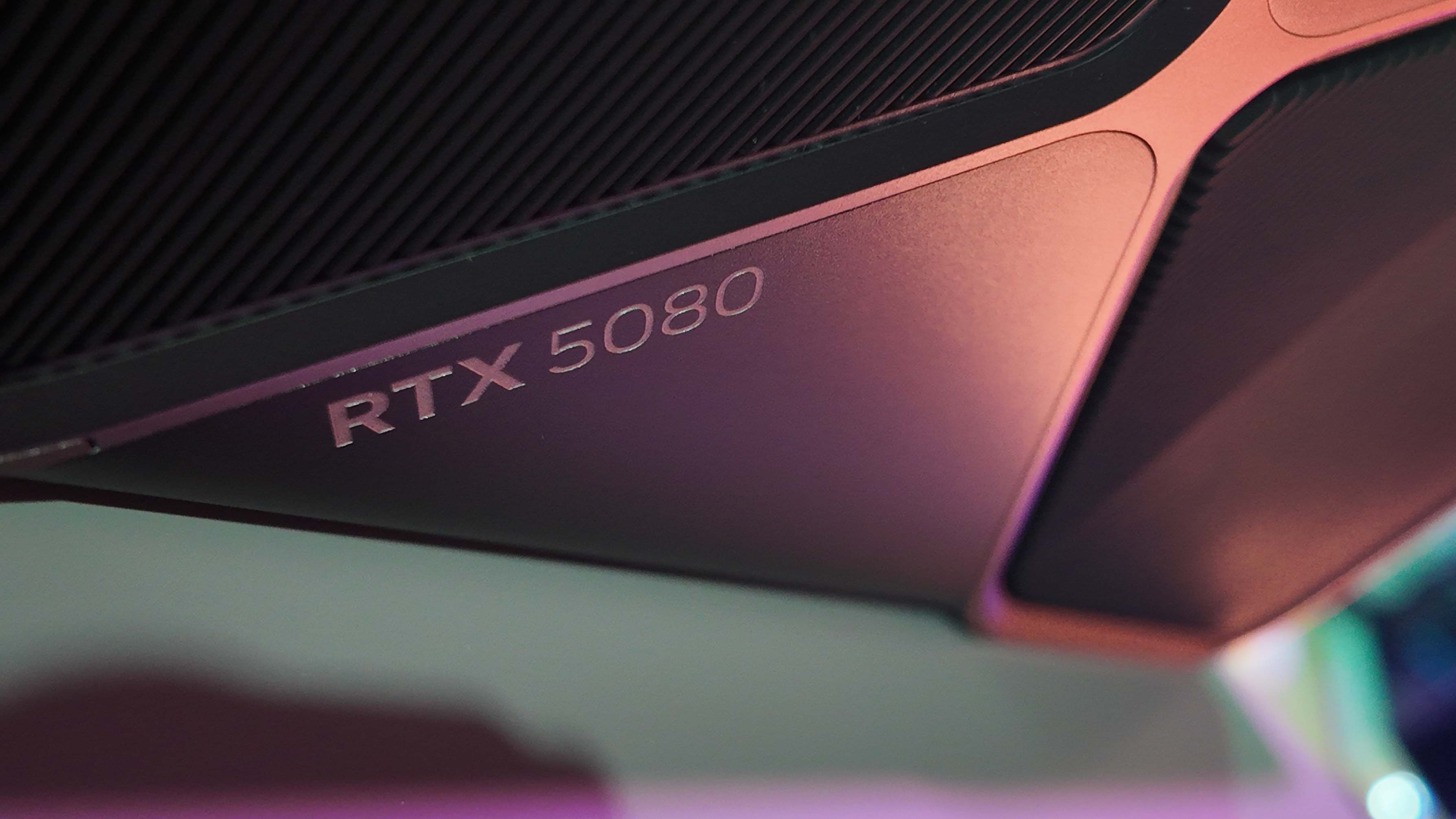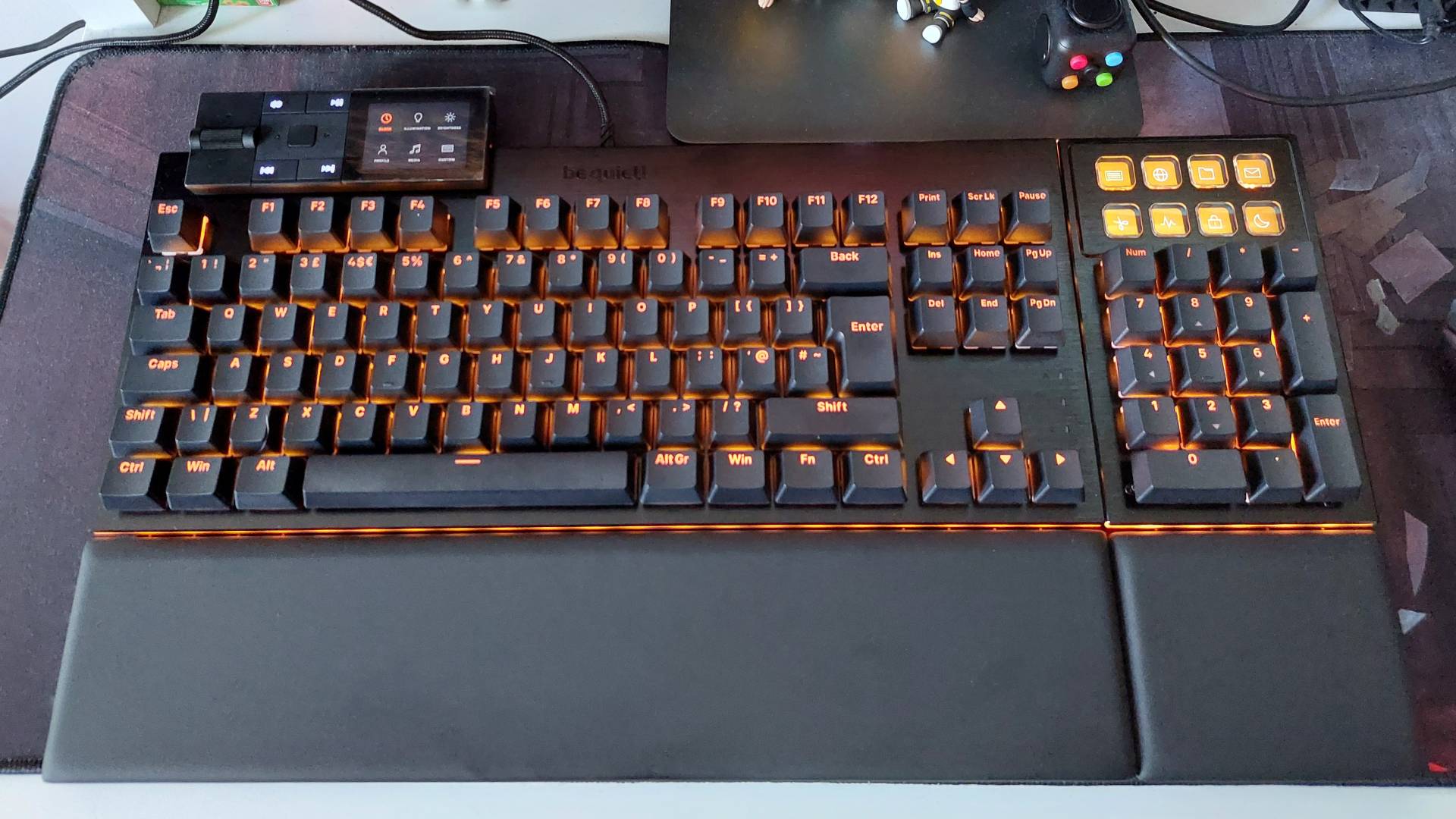I'm genuinely stunned by the overclocking performance of the RTX 5080, and curious as to why Nvidia left so much headroom
Maybe I won the silicon lottery, but the GB203 sure looks like there was a lot of performance left on the table.
The Nvidia RTX 5080 has been a much-maligned graphics card since its launch. It is a smaller, more power-hungry GPU than its Ada predecessor, and doesn't really offer a whole lot more silicon than the RTX 4080 Super. Yes, it's ostensibly the same price, but is only delivering around 15% higher frame rates at 4K, and less at lower resolutions.
Oh boy, I was not expecting this. I've not seen this level of overclocking headroom in a released GPU in years.
That hasn't stopped them from all selling out the instant they went on sale. After all, the impressive performance of Multi Frame Generation and its $999 sticker price does make it much cheaper than the $2,000+ RTX 5090 and still able to offer a healthy generational uplift in DLSS 4 supporting games.
I've felt pretty uninspired by the second-tier RTX Blackwell GPU, if truth be told. It will be a great basis for high-end gaming PCs going forward, but in raw silicon terms the needle has barely moved from Ada to Blackwell.
Well, I was pretty uninspired until I started overclocking this thing. And oh boy, I was not expecting this. I've not seen this level of overclocking headroom in a released GPU in years. There is a ton of raw performance left on the engineering room floor, and it makes what was a pretty middling performance hike over the RTX 4080 Super rather more telling.
I'm seeing over 500 MHz extra performance to play with, which is giving me practically another 10% higher frame rates. And all without really taxing the power or thermal performance of the Founders Edition board.
Since we got into the realms of boost clocks, and smart GPUs essentially altering their clock speeds on the fly depending on the thermal and power headroom available to it, there hasn't been a lot left for overclockers.
Sure, you could bump up the frequency offset a touch, but rarely by a meaningful amount, especially not to a level that would register as anything more than the sort of gaming frame rate variance you'd see just from standard testing. Even factory overclocked cards barely offered anything particularly exciting. Go look at an overclocked Asus RTX 4080 Super and you're lucky if you get another 90 MHz out of it.
The biggest gaming news, reviews and hardware deals
Keep up to date with the most important stories and the best deals, as picked by the PC Gamer team.
What's different here, with the RTX 5080, is that even those factory overclocked cards are offering something different. The Asus ROG Astral RTX 5080 is offering a +173 MHz overclock and the Gigabyte Aorus RTX 5080 a +188 MHz overclock. We've not seen that level of confidence from a manufacture when it comes to their OC cards in a long while.
Now, as much as people might suggest I've won the silicon lottery—and as much as Nvidia wants to point out that users should not expect every board to be able to hit the same 0.5 GHz boost clock bump that I'm seeing—it's obvious to me there is a lot of headroom in the GB 203 GPU right here.

I am not some super special overclocker. Though I have been professionally messing around with GPUs for the best part of 20 years, I am a very basic overclocker. MSI Afterburner is my jam, and I don't go too deep. I did play around with the OC Scanner, which tries to tailor the voltage curve to the capabilities of your GPU, and that can give you higher stable performance, but it didn't really move the needle too much with the RTX 5080.
Just going buckwild with the MHz sliders, however, sure did. With the Black Myth Wukong benchmark running, I was quickly able to go through the gears and hit a solid +500 MHz offset. That wasn't quite giving the 3.1 GHz clock I wanted, however, so I squeezed the GPU some more and hit +525 MHz.
It very much would not go to +550 MHz, though. That way lay catastrophic failure, black screens, and a GPU that was rather tentative about going quite so high again when I rebooted. Having let it lie for a wee while I then went back to +525 MHz and it has remained stable since.
I was rather cavalier with the memory clocks and went all the way up to +1,000 MHz, where I just drew the line out of fear.
As you can see, the performance increase is there. Pretty much a 10% bump at 4K and not far off at 1440p (which is important, as if you're running DLSS at Quality mode at 4K that's the resolution you're really running).
Combine that with the gen-on-gen bump of the RTX 5080 over the RTX 4080 Super and you're now talking about a 25% increase instead of a 15% bump. That's a far more compelling figure, and makes the RTX Blackwell card a more tempting option, especially as it's the same price and also comes with Multi Frame Gen as an extra performance panacea.
Of course, it's still well below the 50%+ frame rate increase you saw going from the RTX 3080 up to the RTX 4080, but it's a better look than the second-tier RTX Blackwell card has presented so far, and much closer to the 30% boost the RTX 5090 gets over the RTX 4090. And it also actually delivers a few occasions where the RTX 5080 is able to match the raw rendering power of that top Ada GPU.
It's barely shifted the thermals or performance demands of the GPU.
One other thing that has impressed me, and made me feel like this is more than just a numbers game, but an overclock I could legitimately live with fulltime, is that it's barely shifted the thermals or performance demands of the GPU. I was half expecting an exponential increase to get that extra 10%, which would have explained why Nvidia had been so conservative on the boost clocks. But no, it's barely changed.
Quite why there is so much performance being left behind as standard, I'm not sure. I only have this one RTX 5080 Founders Edition to hand right now, so it will be interesting to see what other manufacturers' cards deliver on that front, but I would expect to still see some performance in there to play with.
What's interesting here is that the upcoming RTX 5070 Ti also uses the same GB 203 GPU. Sure, it's going to be a fairly cut down version, but it's also got a default boost clock well below that of the RTX 5080. If there is the same headroom in that card it could well be the overclocking king of the upper mid-range.
Still, for now, I'm going to bask in the glory of winning the silicon lottery. And carry on making it run Football Manager 2024 anyways. I mean, it's going to have to keep doing that for a while now the 2025 version's been cancelled, eh 🫗.

Dave has been gaming since the days of Zaxxon and Lady Bug on the Colecovision, and code books for the Commodore Vic 20 (Death Race 2000!). He built his first gaming PC at the tender age of 16, and finally finished bug-fixing the Cyrix-based system around a year later. When he dropped it out of the window. He first started writing for Official PlayStation Magazine and Xbox World many decades ago, then moved onto PC Format full-time, then PC Gamer, TechRadar, and T3 among others. Now he's back, writing about the nightmarish graphics card market, CPUs with more cores than sense, gaming laptops hotter than the sun, and SSDs more capacious than a Cybertruck.

